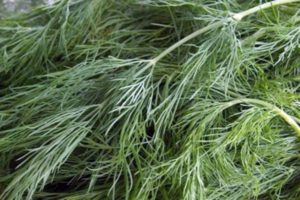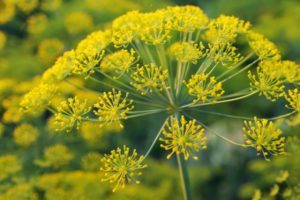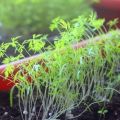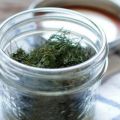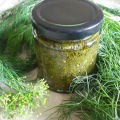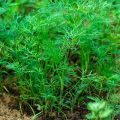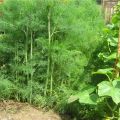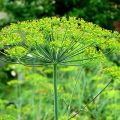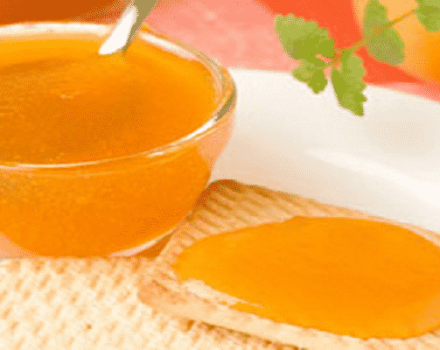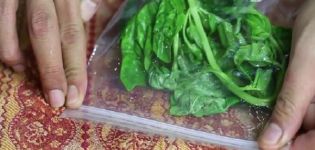How to properly plant dill before winter in the Moscow region in the open field
In the Moscow region, dill planting before winter begins in late autumn and is characterized by a number of features. But most often there is no need to plant a crop before winter, when planting in early spring, it rises quickly, and you can enjoy the greens already in May. The culture is unpretentious and does not require special attention.
Zoning
With the development of agriculture, breeders determine the most favorable areas for the cultivation of certain crops. Suitable varieties for northern and southern regions vary greatly. But dill grows well in any climatic zone. Therefore, it is actively cultivated in a cold northern climate and a favorable southern climate.
Varieties for the Moscow region
Any kind of culture is suitable for the Moscow region. The climatic conditions in this area are favorable and the cultivation of greenery is not difficult. The best varieties for the Moscow region are presented below.
For open ground
The best varieties for open ground:
- Redoubt - refers to early maturing varieties. The height of the dill stems reaches 28 cm. The dill is ready to cut 35 days after planting the seeds in open ground.
- Dalniy is another early maturing variety of dill. The height of the stems is from 29 to 25 cm. The shade of the leaves is dark green.
- Kibray is a mid-season variety for open ground. The height of the stems is 40 cm. The branches of the dill are lush and dense, the greenery has a pleasant dill aroma.
- Alligator is a mid-season variety characterized by high stems. Their length reaches 160 cm. Dill is cut for greens 40–45 days after planting.
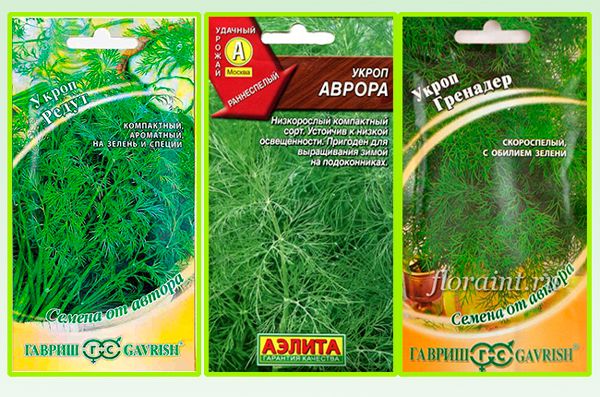
Most varieties are planted outdoors.
For greenhouse
Suitable varieties for the greenhouse:
- Gribovsky is an early variety for greenhouses. The height of the stems is from 20 cm. Suitable for harvesting for the winter. The aroma is pleasant, the greens are fleshy.
- Umbrella - greens ripen 40–45 days after planting in the greenhouse.
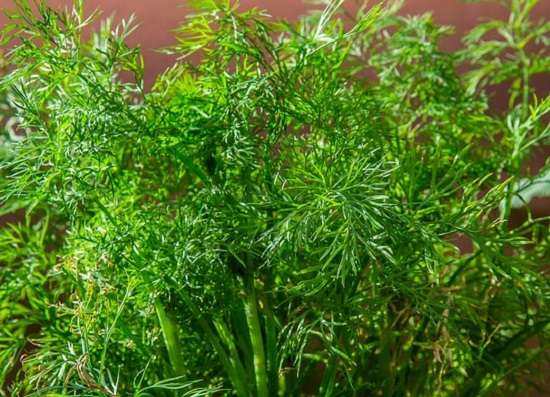
Plant height in some cases exceeds 1.8 m.
Any variety can be grown in the greenhouse, providing favorable conditions.
How to plant dill before winter?
Before winter, they begin to plant in late October - early November. Many summer residents prefer to navigate by the weather.
Planting begins after the air temperature has been around +5 degrees for several days.
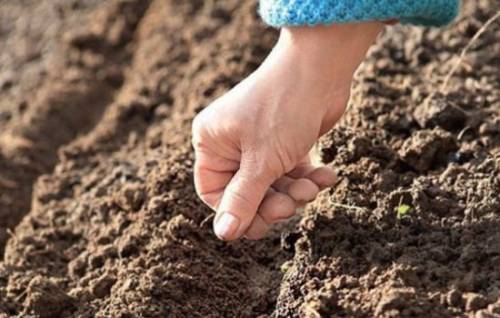
The seeds are sown to a depth of 3-4 cm. The beds are mulched before planting for the winter. In general, planting before winter is no different than spring planting of dill.
How to plant correctly in the suburbs
The quality and quantity of the future harvest depends on the correct planting of any agricultural crop. Special attention is paid to this stage of cultivation. Sowing dill does not differ in complexity, but, observing the necessary planting conditions, it will be possible to grow a rich harvest.
Seed preparation
The preparation of planting material is carried out in several stages. First, the seeds are placed in cheesecloth and soaked in warm water. The water is changed several times a day. They do this for 3 days.

Then the seeds are taken out of the gauze, laid out in a thin layer on a damp cloth, and covered with a second piece of cloth. Leave them in this form for 4 days. The fabric is periodically sprayed with water. Before planting in the soil, they are dried for 3 minutes.
Sowing
Sowing dill begins after the soil warms up well. The optimal planting dates are late April and May. Planting later varieties will provide greenery in the fall.
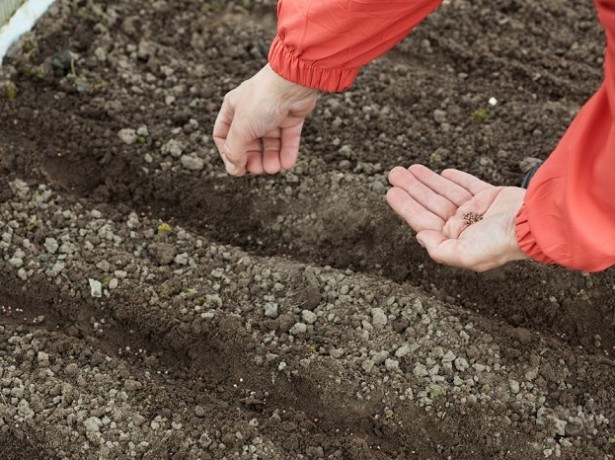
Before planting, the soil is well dug up and mineral or organic fertilizers are applied. Then shallow grooves are made and dill seeds are sown.
It is not recommended to cover them heavily with soil, otherwise the sprouts will not sprout well.
Water the beds abundantly from the watering can.
How to care?
Dill care is minimal. In most cases, regular watering and fertilization is enough for him. To prevent the appearance of pests, the bushes are periodically examined.
Watering
Dill loves moist soil, but excess moisture, in turn, leads to the development of diseases and decay of the stems. Water the greens with warm water 3-4 times a week. In dry weather, the amount of watering is increased. The main thing is not to water the plants with cold water, otherwise they can get sick and die.
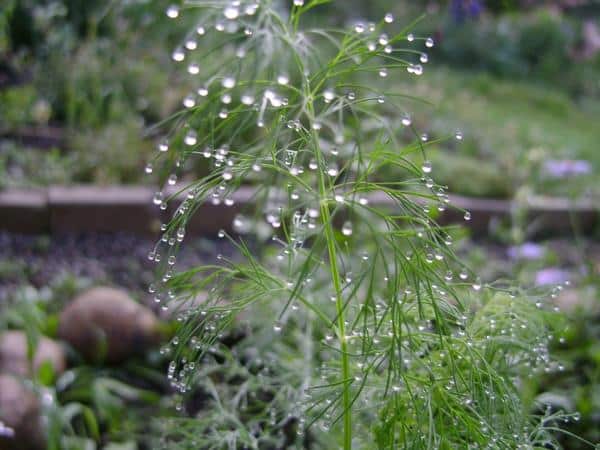
Top dressing
A mullein solution or nitrogen-containing fertilizers must be applied to the soil for growth. It is this element that dill needs most of all. Nitrogen helps to build up hardwood. Nitrate, ammonia water or urea are used as nitrogen-containing fertilizers.
Weeding
It is not necessary to weed if there are no weeds in the beds. Once a week, the beds are loosened to saturate the soil with oxygen. Such weeding is quite enough for the plant. In order for dill to grow better, thin it out.
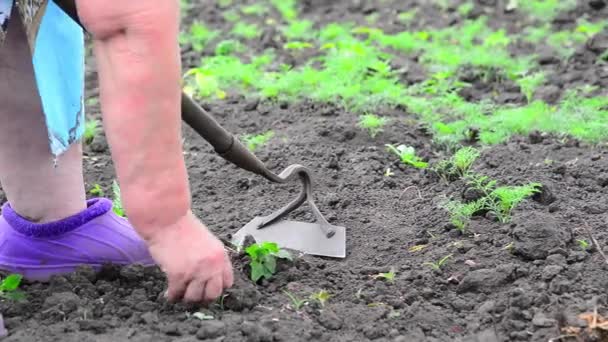
Diseases and pests
The most common type of aphid found in the garden is the willow-carrot aphid. During the season, the pest is able to reproduce up to 17 generations, which makes their invasion a real disaster for gardeners.
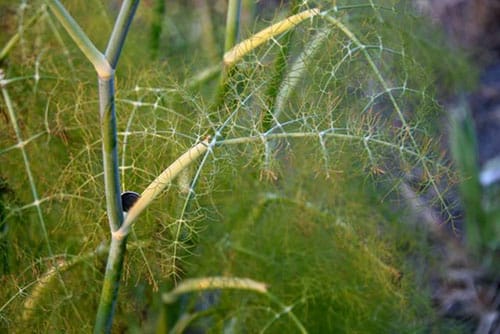
To prepare the vinegar solution, you need to take 1 tsp. vinegar and 1 liter of clean water. Stir and pour into a spray bottle. You can use apple cider vinegar instead of regular vinegar. It is equally effective against aphids.
To prepare a solution based on apple cider vinegar, take 1 tbsp. l. vinegar and 1 liter of water. Stirred and processed in the same way as in the first embodiment.
Collection and storage
You can cut the greens at any time when the dill has grown. Fresh herbs are used as a seasoning for various dishes.
The collected greens must be thoroughly rinsed under running water. A large number of insects are often found in dill, which must be washed off the greens before eating greens. Fresh and stored in the refrigerator. As such, it is suitable for soups, borscht, sauces and other dishes when herbs are added during cooking. Dried dill is stored in glass jars with a closed lid. It is more flavorful than frozen and is also used for cooking.
